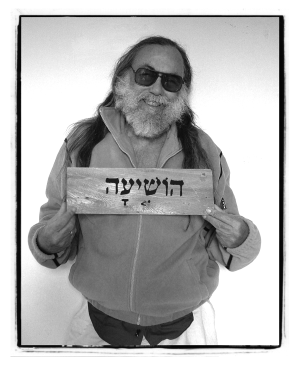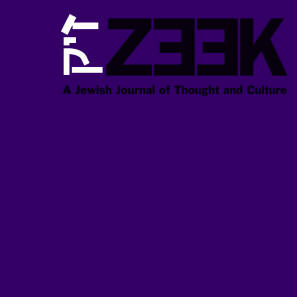 January 08
January 08
What Independent Minyanim Teach Us About the Next Generation of Jewish Communities
by Ethan Tucker
p. 2 of 2
Empowerment also has consequences. It threatens to destabilize the monopolies of existing institutions by opening up skills and resources to anyone who is seriously seeking them. That may lead to tension down the road between empowered Jewish communities and mainline Jewish bureaucracies, but it will ultimately be better for the vibrancy of Jewish life. From another angle, empowerment is not always a receptive dynamic to those seeking an open, supportive environment for all. Skills are open to all serious seekers, but standards demand that only those who have mastered those skills get to practice them in the public sphere. This dynamic may drive some Jews to Renewal communities and other more actively inclusive environments, but it plays a critical role in creating a powerful model that can inspire Jews to increase their competence and involvement in Jewish life.
Practical Implementation
 How do these philosophical commitments translate into practice? Independent minyanim offer a practical model of how a vision of prayer in a community was brought into reality. Below are a number of practical visions for realizing the model of Jewish community beyond the world of prayer, all of which play out the commitments to excellence, seriousness and empowerment discussed above:
How do these philosophical commitments translate into practice? Independent minyanim offer a practical model of how a vision of prayer in a community was brought into reality. Below are a number of practical visions for realizing the model of Jewish community beyond the world of prayer, all of which play out the commitments to excellence, seriousness and empowerment discussed above:
Communal Leadership.
An empowered Jewish community is one that may well be led by a rabbi and other professionals, but in which there is also sufficient lay knowledge to take ownership of the running of ritual and the ongoing maintenance of the Jewish community’s basic needs. The goal is to move from a model where people are completely dependent on clergy for content to one where members of the community are immersed in a world of observance, learning and social justice that speaks for itself and empowers each member to become an increasingly independent Jew - in short, an “ownership” community. This includes the physical and ritual aspects of Jewish life. Sacred texts written on parchment, matzah baked for Pesach, mikvaot (ritual baths) and eruvin (boundaries demarcating a Shabbat community) are among the many concrete expressions of Jewish observance that require skills and training. We need centers that will empower any willing Jewish student to take ownership of these processes. We must move beyond the current model that either neglects these activities altogether or contracts out this expertise to small sectors of the Jewish community unfamiliar to most Jews. It is time to take responsibility for our basic religious practices and empower those willing to learn how to take charge of these matters on their own.Yeshivot.
All great Jewish communities throughout the ages have had yeshivot, centers of higher Jewish learning that push more mature students deeper into the tradition. Working together with serious schools that place high intellectual demands on all their students, yeshivot identify the most promising Jewish learners for positions of leadership in the world of Jewish study. Yeshivot form the intellectual center of any Jewish community, model the centrality of study and the examined life to the Jewish conception of self, and train the lay backbone of the Jewish community to engage with our sources of inspiration and wisdom throughout the generations. There is a particularly powerful need for learning environments that will engage both men and women at the highest levels of learning and model the increasingly egalitarian reality of our time in the inner sanctum of the Jewish intellectual spirit—the beit midrash. These yeshivot must ultimately be able to train highly knowledgeable scholar-leaders who can converse with the most advanced scholars of Jewish sources anywhere in the world and who have the breadth to embrace the multiple expressions of Jewish life that can emerge from a shared spiritual discourse of halacha.The Jewish community at large, not just the Haredi world, must recognize that Jewish excellence requires a lifetime commitment to learning on the part of scholars, and a financial commitment on the part of the wider community. Beginning serious learning only when entering a professional rabbinical school is insufficient, and even four to five years of serious learning cannot train the most advanced students to realize their full potential. We must expand the number of institutions that are able to attract young Jewish minds thirsty for learning and support the most committed and talented among them to learn for at least a decade, if not more, even as they integrate their learning into communal leadership.
Social Justice Initiatives.
Almost all Jewish communities today pay lip-service to social justice, social action, or tikkun olam in some form. However, the general model in synagogues is to leave social action to a devoted core of activists, or to a charismatic rabbi, and the overwhelming focus of Jewish political activity, at least since the end of the Soviet era, has been on supporting the State of Israel. These concerns are often seen as parochial (at best) by younger Jews, and if Jewish communties are to take seriously the divinely ordained dignity of human beings and the Torah’s mandate to advance the cause of redemption, social justice initiatives must be thoroughly integrated into Jewish communal life - not as an optional add-on to one’s core Jewish identity, but as an essential ingredient of what it means to be a Jew. Whether environmentalism or combating genocide, grassroots volunteerism or political action, ethical political action in its widest sense must be understood to be at the heart of Jewish moral commitment.Publications.
Contemporary Jews yearn for literature that can help them tap into the rich world of Jewish learning and practice. The tremendous success of Artscroll publications in recent decades - well beyond the confines of the ultra-Orthodox community that produces them - reveals the deep thirst for quality, direction and content in Jewish life. If the Jewish community truly wants to be a “People of the Book,” it must invest in this substantive and intellectual backbone of the the Jewish future. We need practical guidebooks for Jewish prayer and observance that are sensitive to difficult contemporary questions and that prefer a broad appreciation for Jewish history over a narrow fundamentalism (i.e., Artscroll for non-ultra-Orthodox Jews), translations and commentaries that integrate the great advances of modern Jewish scholarship into works that make the Jewish bookshelf accessible to the Jewish people, serious and intelligent contemporary journals (such as this magazine) and subsidized presses. Critical to this endeavor is command of the non-print media and an aggressive effort to use online media, podcasting and other tools of mobile learning to connect with Jews who, like all human beings today, are increasingly transient, independent and constantly multi-tasking. Already, whether through nuanced discussions of pluralism (check out the Hilchot Pluralism series on mahrabu.blogspot.com) or through online databases intended to provide maximal information on different minyanim and synagogues (see, e.g., shulshopper.com), voices are emerging to help Jews navigate the complexities of the contemporary Jewish world. These pluralistic approaches to Jewish life - which help Jews choose selectively and eclectically from existing choices - along with new substantive models of Jewish life must be nourished, funded, supported and celebrated.What Will our Contribution Be?
The last century’s experiment in centralized Jewish planning is something of an anomaly in Jewish history, and in this post-communist era, an oddly outdated one. From the days of the Talmudic academies to the recently created independent minyanim, the energy and passion of Jewish life is ultimately dependent on Jews actively building, from the ground up, self-sustaining models of Jewish life that have the potential to leave echoes for generations to come. The principles and practical applications I laid out above are an attempt to begin to sketch out the road map of how this might happen and what is required for success, using the track record of the independent minyan movement as a model. Some may view independent minyanim as purely an act of narrow spiritual fulfillment, tailored to the needs of the hour and to a particular demographic. But if we take ourselves seriously, they can be more than that: another in a long line of Jewish structural revolutions that leaves an indelible mark on the Jewish future.
Ethan Tucker is completing ordination from the Chief Rabbinate of Israel and earned a PhD in Talmud from the Jewish Theological Seminary. He is a cofounder of Kehilat Hadar and Mechon Hadar.









